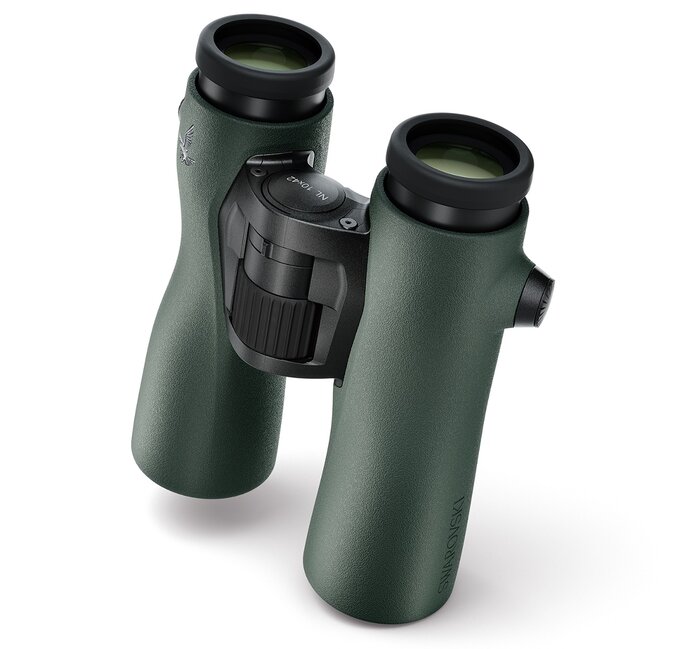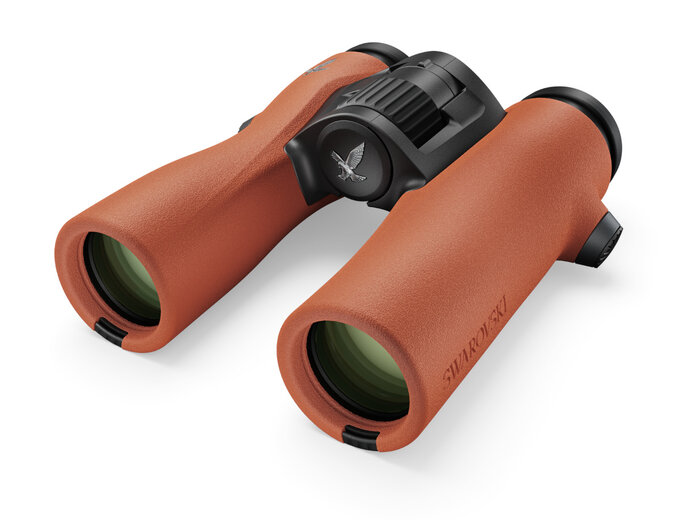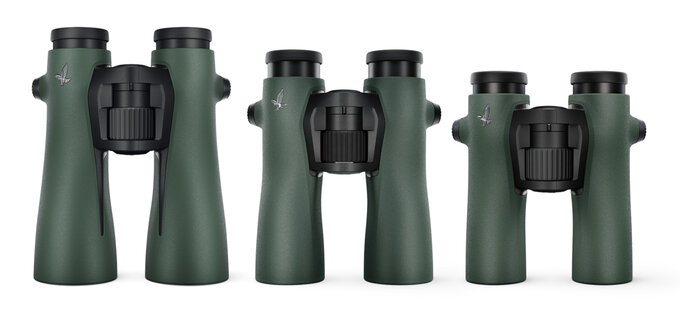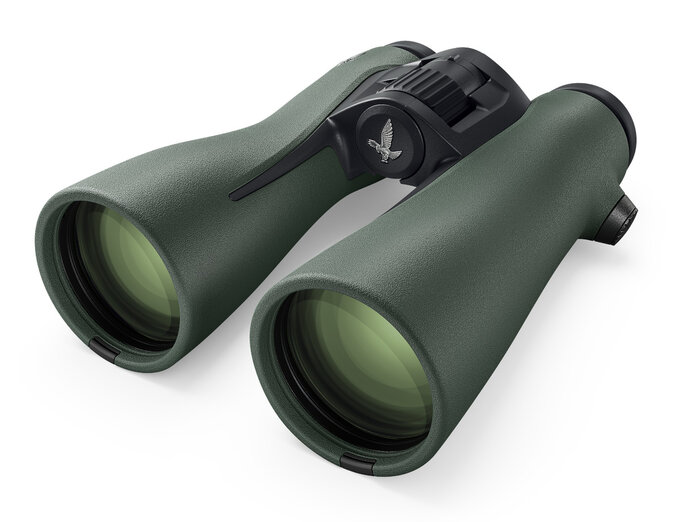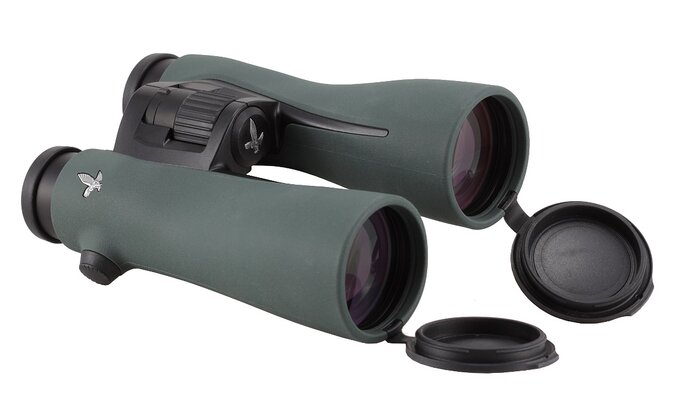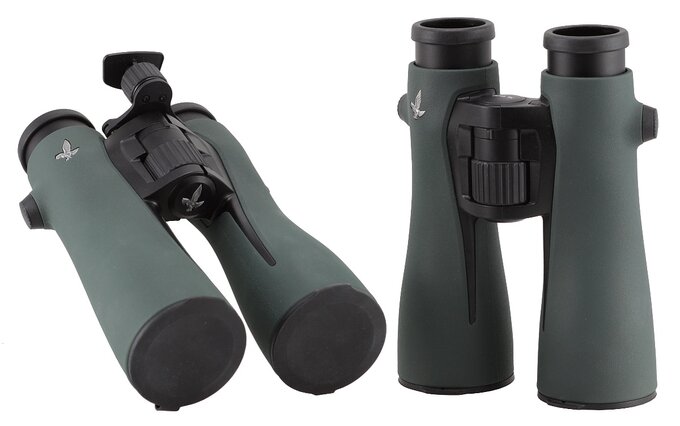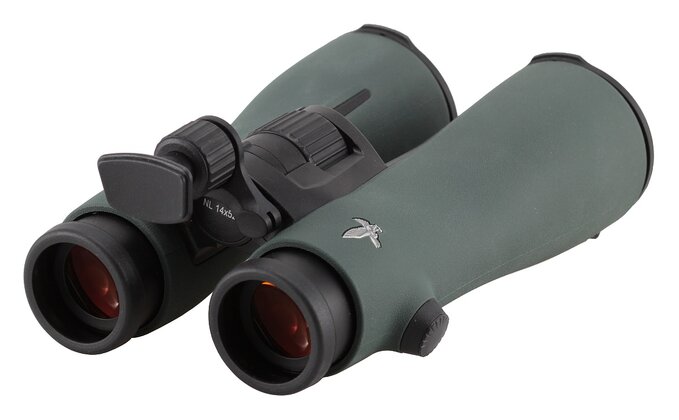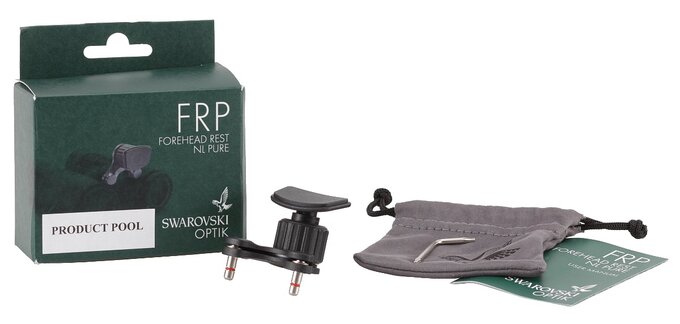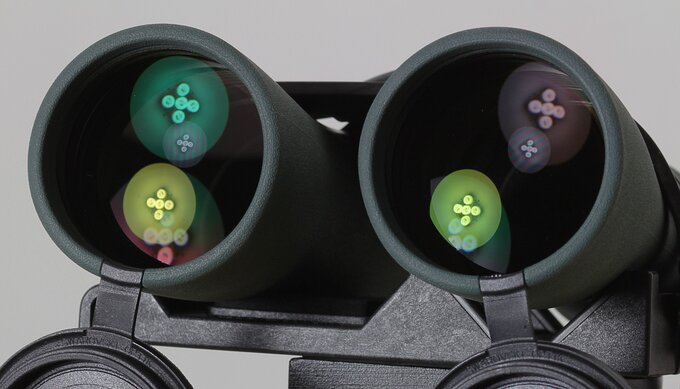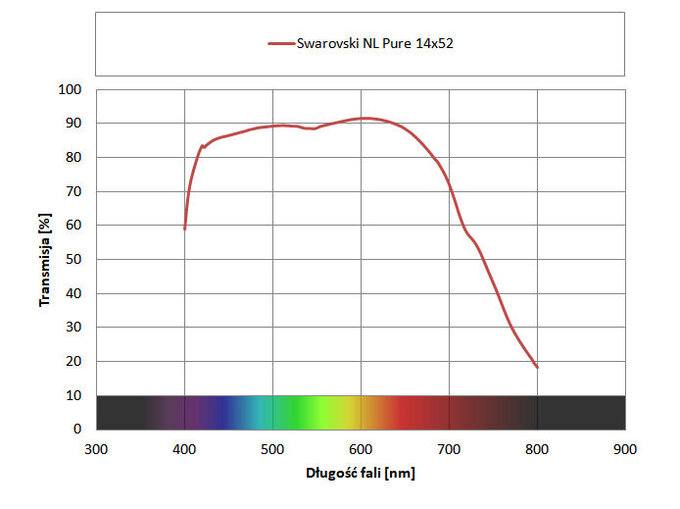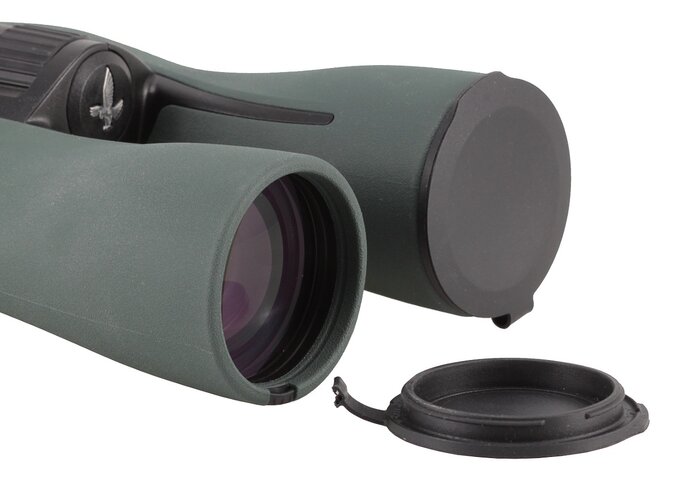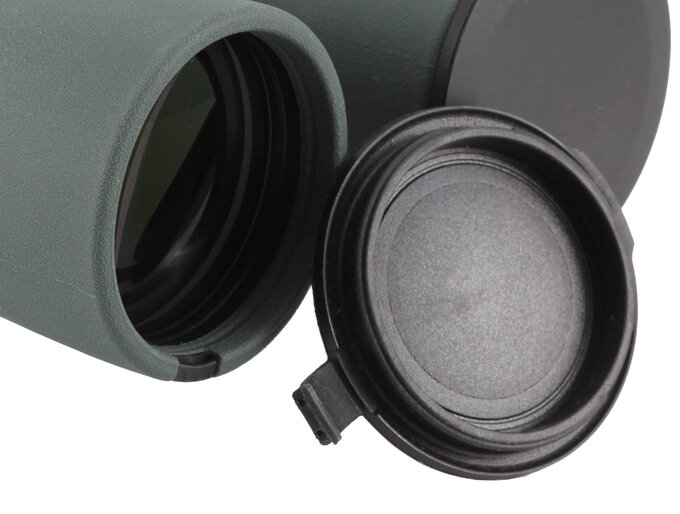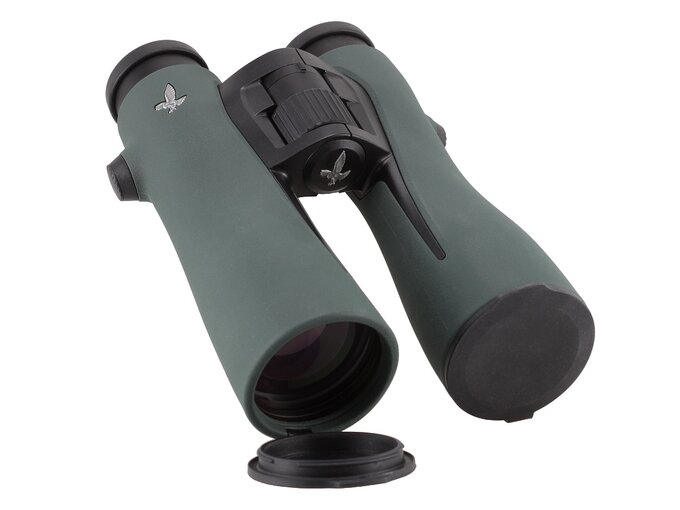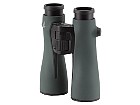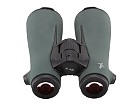| Real front lens diameter |
Left: 51.73+/-
0.05 mm
Right: 51.74+/-
0.05 mm
|
7 / 8.0 pkt |
| Real magnification |
14.31+/-
0.05x
|
3/3.0 |
| Transmission |
89.2+/-
1%
|
17/25.0 |
| Chromatic aberration |
Low in the centre but a bit higher than in the 10x52 model. A bit lower than medium on the edge. |
7.4/10.0 |
| Astigmatism |
Very low. |
8.3/10.0 |
| Distortion |
Starts to appear in a distance of 70-75%, but is low; its increase is quickly limited and on the very edge it drops to practically zero. The performance is even better than in the 10x52 model. |
10/10.0 |
| Coma |
Appears in a distance of 60% of the field of view radius and is low on the very edge. |
7.5/10.0 |
| Blurring at the edge of the FOV |
Sharpness kept excellently well almost across the whole field of view. You can notice slight worsening of sharpness near the very diaphragm. |
10/10.0 |
| Darkening at the edge the FOV |
Very low. |
4.5/5.0 |
| Whiteness of the image |
Very good, without any noticeable colouring. Minimally slanted transmission graph. |
4.6/5.0 |
| Collimation |
Perfect. |
5/5.0 |
| Internal reflections |
| Left: |
Right:
|
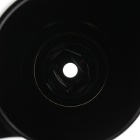 |
 |
The situation is not perfect. You can see some brighter areas near the exit pupil. |
4/5.0 |
| Housing |
Very solid, but also sleeker than the EL series instruments. Doesn't look big, especially if compared to other 50 mm class models. The profiled casing, shaped so because of the turning of the prisms, fits your hands very well so the binoculars are a joy to hold and to look through. Objective lenses are hidden inside the casing over 1 cm deep in the tubes. The rubber armour sticks to the body very well, is slightly rough, and quite nice to hold. It has traces of glueing/joining and it spoils a bit the overall esthetics. Rubberized eyecups fit your eyesockets well and they have as many as seven detention stops. The binoculars are produced in Austria. We detracted some points for a faulty fixing of an objective cap. |
6.9/8.0 |
| Focusing |
Compared to the EL series the focus wheel has been changed significantly – now it is surrounded by a bridge and behind it there is a small joystick for dioptre correction. It looks and works better than in case of the predecessors, with a bit more distinct resistance. It is typical for Swarovski that you have to turn the wheel a lot – its focus throw amounts to an angle of about 690 deg. |
5/5.0 |
| Tripod |
You can buy an andditional brand-name attachment. With such magnification and such a price both a tripod adapter and a headrest should have been added to the box. |
2/3.0 |
| Interpupilary distance |
from 55 to 74mm
|
5/6.0 |
| Closest focusing distance |
3.70 meters. |
2/2.0 |
| Eyepieces FOV |
Apparent field of view amounts to 75.8 degrees (simplified formula) and 67.0 degrees (tangent formula). |
18/20.0 |
| Field of view |
Measured by us amounted to 5.30 ± 0.02 deg and it was in perfect accordance with the field stated officially by the producer. A huge field for this class of equipment. |
8/8.0 |
| Quality of the interior of the barrels |
Inner tubes are ribbed and matt but rather gray than black. A movement of the focal element reveals a bright screw and a part of the tube situated deeper inside which is neither ribbed nor gray anymore, without any distinct traces of matting. Very clean. |
3.8/5.0 |
| Vignetting |
| Left: |
Right:
|
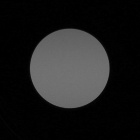 |
 |
OL: 0.93%, OP:0.36% |
7/8.0 |
| Prisms quality |
Wysokiej klasy BaK-4. |
8/8.0 |
| Antireflection coatings |
Green-yellow-purple on objective lenses, green-yellow on the prisms, purple-pink-yellow on eyepieces. Low intensity. |
5/5.0 |
| Warranty [years] |
10 years |
4.5/6.0 |
| Final result |
86.1%
|
163.5 / 190 pkt
|
| Econo result |
|
0pkt. |
Summary
Pros:
- solid, stylish and quite handy casing,
- huge field of view,
- transmission in accordance with official specifications,
- excellent colour rendering,
- sharp images practically across the field of view,
- very good astigmatism correction,
- slight chromatic aberration,
- very low distortion with good correction of the rolling-ball effect,
- negligible brightness loss on the edge of the field,
- moderate coma,
- sensibly looking areas near exit pupils,
- clean interior of the binoculars,
- coatings of excellent quality,
- high quality prisms made of BaK-4 glass.
Cons:
- weak fixing of objective caps,
- price?
Even 2-3 decades ago every respectable optics producer tried to offer at least three pairs of binoculars with objective lenses as big as 50 mm. Models with 10 and 12x magnifications were kind of classics. In case of the lowest magnification some decided to employ 7x and others 8x. The 7x50 model had the biggest exit pupil out of all binoculars, offered on the market, so it was a perfect instrument for sweeping the sky, nighttime hunting, or sailing. Its big exit pupil, often bigger than the maximum dimension of the human pupil, made some producers to offer 8x50 devices.
Swarovski in their top-of-the-range NL Pure series decided to employ an objective diameter as wide as 52 mm and that excluded a 7x magnification at the very start because its exit pupil would have to be huge, amounting to 7.43 mm. Still there were no obstacles when it comes to offering 8x52 class instruments with a diameter of 6.5 mm. Unfortunately the NL Pure line at this objective diameter is limited to a very classic 10x, and not-so-classic 14x magnification.
Such a movement can be assessed as very sensible, especially when it comes to offering a useful and effective headrest. You get here a magnification noticeably bigger than in the classic 12x50 model but, at the same time, the dimensions of the housing, its shape, and weight, and the presence of the headrest, mentioned earlier, make handheld observations still very comfortable. A huge field of view of eyepieces is an additional asset, and their ergonomic design makes using this pair of binoculars a real joy.
Looking at the list of results in particular categories and the list of pros and cons, it's clear that the 14x52 model fares very similarly than the 10x52 instrument, tested by us before.
What's interesting, there are some differences when it comes to the shades of coatings. In the model with higher magnifications coatings of the objective lenses seem to have more green in them.
The effect is visible in the shape of the transmission graph. It is a bit more slanted than in case of the model tested by us previously. Of course it has just a slight influence on white ballance even though also in this model you deal with crystal-clear, bright images, a characteristic feature of Swarovski devices.
In the centre of the visible spectrum the transmission reaches a very high level of 89% and in the red part it is able to get even to 91.5%.
Our typical test would end right here, with oohs and aahs well deserved by this pair of binoculars. We would certainly write that once again Swarovski left all the rivals behind, perhaps carping a bit about the fact that you have to pay 3500 USD for the pleasure of owing it.
This ending will be far from typical, though. Why? Because the NL Pure 14x52 surprised us and not in a nice way.
First let's mention the fact that the tested specimen was sent to us straight from the headquarters of Swarovski Optik in Austria. We dealt with a brand-new model that most certainly hadn't been used before. Our test lasted about three weeks and I have to admit the binoculars didn't been used in especially hard conditions. Apart from product photos, which we took outside, we didn't carry it outdoors almost at all. In fact you might say we didn't even start to use it extensively.
Even before I sent it back to Austria, I had decided to take NL Pure 14x52 for some days home, to enjoy its superior optics. I happen to have a big balcony with a nice view, a great spot to test binoculars; after a short observation period I put the binoculars down on the tv decoder. Its objective lenses stuck out a bit outside the decoder box so open objective caps dangled freely.
About half an hour after my observation session I was standing in the room and talking to my son. While we were both facing the decoder and the binoculars one of the caps fell off right in front of us. Nobody was touching the binoculars at that moment, nobody even was walking close by. The second most expensive pair of binoculars, tested by us in a period lasting over 20 years, and it was falling apart right before our eyes. If I didn't witness it myself I certainly wouldn't believe it.
I am really curious what the reaction of the Swarovski Optik will be. On the one hand we handled a brand-new product still under warranty; on the other hand such an incident looks like a mechanical fault, usually not covered by warranty conditions. Still this is clearly a result of a factory defect. How to prove such a point to the manufacturers, though?
I find it really sad that such a situation happens to a very expensive piece of equipment from a very renowned producer and it's never happened during any other test of even these cheap, Chinese devices costing around 100 USD. I suppose Swarovski has to work on better fixing of their objective caps really hard.
